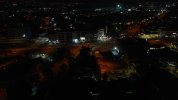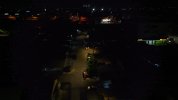You are using an out of date browser. It may not display this or other websites correctly.
You should upgrade or use an alternative browser.
You should upgrade or use an alternative browser.
Air 2s Night photos
- Thread starter Daniel2300
- Start date
No .. those photos are too dark.Dark is the natural color at night.
Greater exposure will cause shining everywhere.
Your first image could look like this without "shining everywhere".

Last edited:
I have CPL filter at night too, if I prolong shutter speed from 1/3 to 1/2, the picture looks reddish color.
I am not sure why?
Should I take down the CPL filter?
I am not sure why?
Should I take down the CPL filter?
Why?I have CPL filter at night too
Unless there's a real reason to use it, then the answer is yes.Should I take down the CPL filter?
A CPL filter – which stands for circular polarizer/linear — is a glass attachment that can reduce the glare from reflected surfaces. Although there are various types available on the market, the most popular is the circular model, partly as it can fit easily onto the end of virtually any camera lens.
One of the first things people notice when starting out in photography is how difficult it can be to take photos through a window. A polarized filter grants you the benefits of the polarization effect, which has the ability to reduce all those unwanted light streaks that blur the subject of your shot. It can also do the same for light reflected on water surfaces.
Photographers also find a circular polarizing lens filter handy if they take photos through a window, or of glass buildings, as distracting light streaks and glare that infiltrate a shot can be eliminated. Photos of painted surfaces, such as vehicles or buildings, also create shine and reflections and can benefit from the use of a CPL filter.
A CPL filter will also reduce glare from reflected surfaces, creating clearer images. However, if you take photos of rainbows – which are caused by glare when the sun’s rays and moisture combine – turning the filter to increase the level of glare can actually enhance the rainbow’s colour and clarity.
One of the first things people notice when starting out in photography is how difficult it can be to take photos through a window. A polarized filter grants you the benefits of the polarization effect, which has the ability to reduce all those unwanted light streaks that blur the subject of your shot. It can also do the same for light reflected on water surfaces.
Photographers also find a circular polarizing lens filter handy if they take photos through a window, or of glass buildings, as distracting light streaks and glare that infiltrate a shot can be eliminated. Photos of painted surfaces, such as vehicles or buildings, also create shine and reflections and can benefit from the use of a CPL filter.
A CPL filter will also reduce glare from reflected surfaces, creating clearer images. However, if you take photos of rainbows – which are caused by glare when the sun’s rays and moisture combine – turning the filter to increase the level of glare can actually enhance the rainbow’s colour and clarity.
I'm well aware of what a polarising filter is.A CPL filter – which stands for circular polarizer/linear — is a glass attachment that can reduce the glare from reflected surfaces. Although there are various types available on the market, the most popular is the circular model, partly as it can fit easily onto the end of virtually any camera lens.
One of the first things people notice when starting out in photography is how difficult it can be to take photos through a window. A polarized filter grants you the benefits of the polarization effect, which has the ability to reduce all those unwanted light streaks that blur the subject of your shot. It can also do the same for light reflected on water surfaces.
Photographers also find a circular polarizing lens filter handy if they take photos through a window, or of glass buildings, as distracting light streaks and glare that infiltrate a shot can be eliminated. Photos of painted surfaces, such as vehicles or buildings, also create shine and reflections and can benefit from the use of a CPL filter.
A CPL filter will also reduce glare from reflected surfaces, creating clearer images. However, if you take photos of rainbows – which are caused by glare when the sun’s rays and moisture combine – turning the filter to increase the level of glare can actually enhance the rainbow’s colour and clarity.
That's why I suggested that unless there's a real reason to use it, then you should remove it.
Perhaps you should read further in the article you copied and pasted from.
Go further down the page to where it tells you ....
Night Shooting
CPL filters also tend to work best during daylight, particularly on bright days. So you’re unlikely to benefit from this filter if you take photos at night.
The article gives more details if you read further.
Similar threads
- Replies
- 12
- Views
- 518
- Replies
- 8
- Views
- 569
- Replies
- 2
- Views
- 535
- Replies
- 7
- Views
- 1K
DJI Drone Deals
New Threads
-
-
-
The FCC ban on all foreign made UAS and UAS "critical components"
- Started by anotherlab
- Replies: 4
-
-













